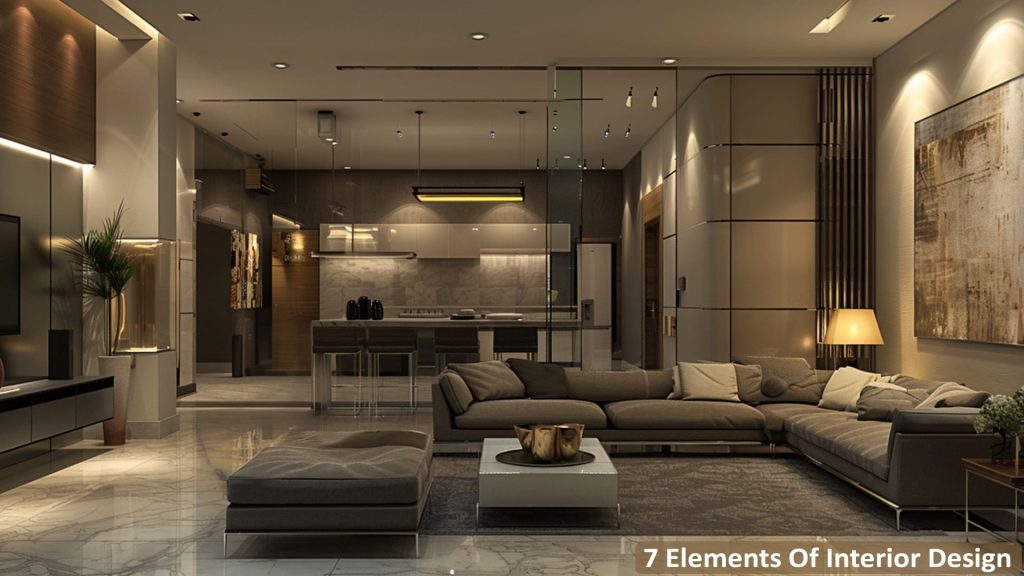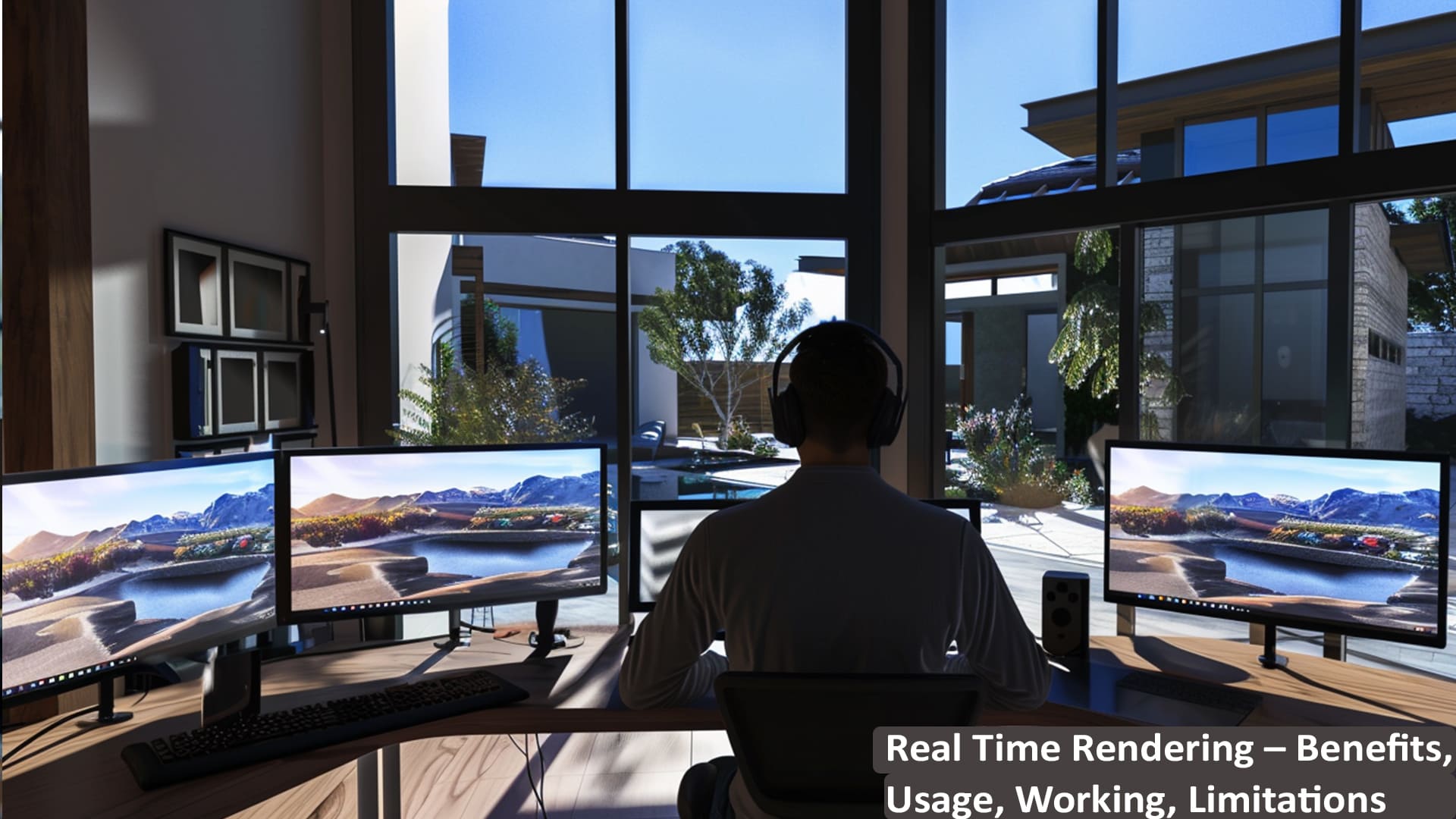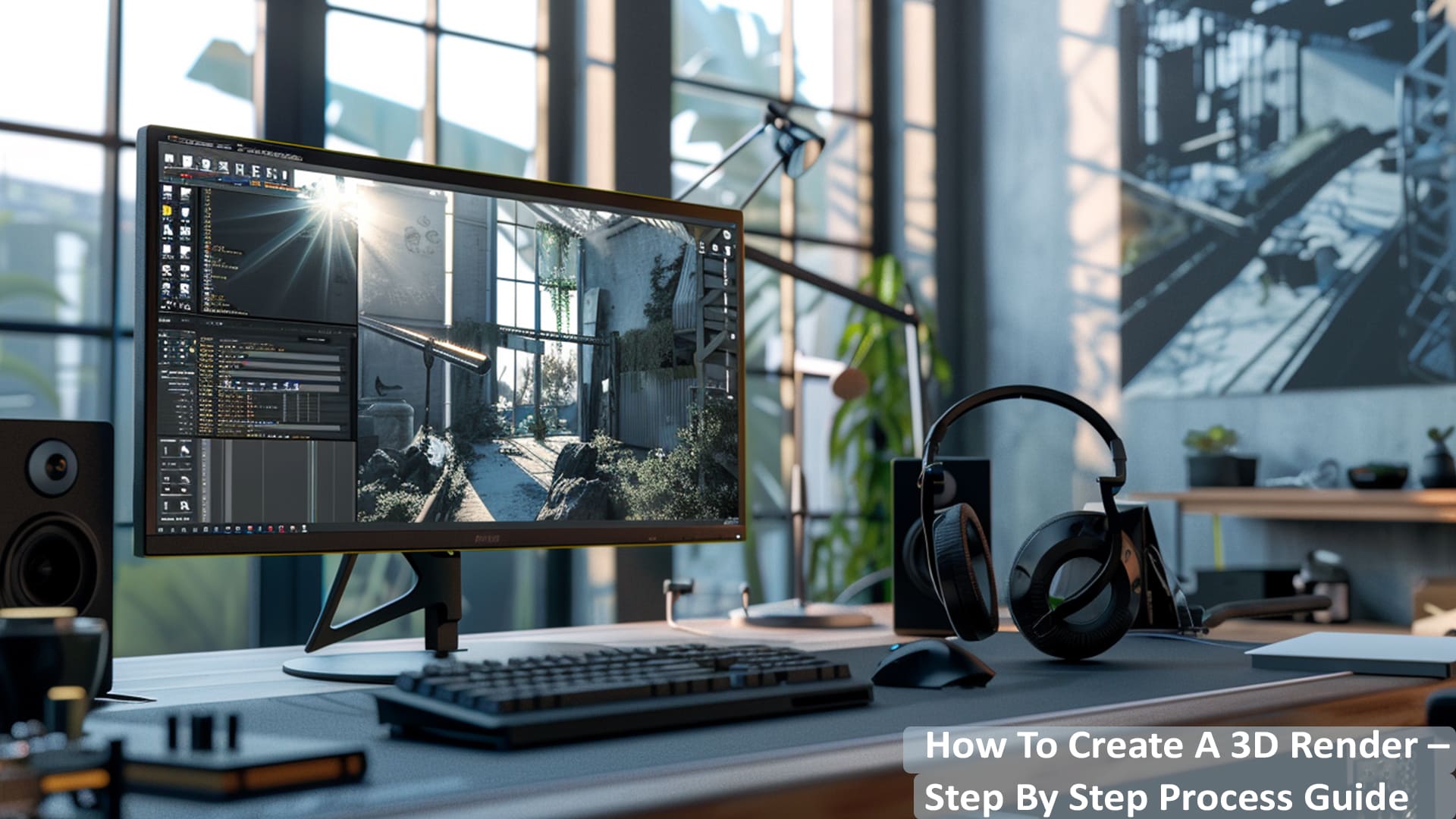Elements of interior design are the secret ingredients behind a successful architectural interior design project. It’s like while preparing the recipe, if you know about the ingredients you can play with them in the best way. Similarly, having an in-depth understanding of the elements of interior design will not only make the space look stylish but also make it functional. Whether it’s your bedroom, kitchen, living room or any room, implementing the design elements ensures that design principles of balance, rhythm, proportion and emphasis are followed truly. Let’s dive in and understand all the 7 elements of interior design in detail.
7 Elements of Interior Design
7 elements of interior design are followed worldwide and are essential to craft interiors that are appealing and amazingly functional.
1. Space – Space is the first thing that an interior designer will look into to get a glance over the dimensions. In layman’s terms, space in a room refers to physically being bounded by four walls. Any space comprises of three elements- length, breadth, and height. It is necessary to understand the aspects of space to make sure it is well-designed and functional.
- Space can either be two-dimensional or three-dimensional. A two-dimensional space is bounded by the floors, rugs, or carpets that you lay on the floor. A three-dimensional space includes things such as doors, windows or other furniture that includes length, breadth, and height.
- Also, space is categorised as negative and positive space. Space that is occupied by anything such as furniture is known as positive space whereas empty space is known as negative space.
This element of interior design helps designers choose the right furniture for the room so that it does not look messy or overcrowded.
2. Lines – Lines bring directions, create a defined look and visual guidance to the room. Three types of lines are visible in a room. These are: horizontal, vertical, and dynamic. The interior designer needs to strike a balance between all three for a cohesive look.
- Horizontal Lines are the lines that run from side to side and are mainly found in furniture such as tables, beds, and other flat surfaces. These lines enable the room to appear longer and wider. Overuse of horizontal lines will make the room appear dull and boring.
- Vertical lines are the lines that run top to bottom such as those created by windows, a bookshelf or door. They help to turn the room expressive.
- Dynamic lines are irregular or zigzag lines that provoke the user to take an action. These attention-grabbing lines are found in staircases and other similar structures.
3. Forms – The next in elements of interior design is Forms which refer to any type of shape that is found in the room. Any three-dimensional object comes in a certain shape or form. There are mainly two types of forms: natural and geometrical. Natural form comprises all natural elements such as plants whose shape is decided naturally and not by humans. Geometric Forms comprise objects such as beds, sofas, lighting fixtures etc. Round shapes reflect a sense of softness while square shapes embody strength. Depending on the needs and requirements, the interior design can repeat the forms (patterns) or stick to a single form.
4. Light – Light, be it natural or artificial, sets the mood of any room. The room needs to ensure a right balance between both the light options to ensure the room stays refreshing and pleasant from morning till night. You need to follow this element of interior design critically as it helps you ensure the right colour management, get the best of directional lighting, and enhance functionality. Making a blend of both lights also enables one to perceive the best of space. The light is further classified into three main categories:
- Task lighting: This includes sources of light that serve a specified purpose such as bed lamps.
- Accent lighting: This lighting aims to accentuate the look of the room i.e. decorate the room.
- Mood Lighting: As the name says, mood lighting sets the mood of the room or ambience. For example: disco lights are used to turn on the party mode.
5. Colours – Colour is just not an aesthetic choice. It’s more than that. Colours have the power to uplift the mood and influence the ambience of the room. It’s the choice of colours that can make a room look bigger and smaller. Painting the room with pastel colours will make your room appear bigger and soothing while using darker colours will give a bold look. Also, certain colours are associated with feelings and emotions. Red is associated with passion while greens and blues are considered soothing colours. Choosing the right colours will make the room appear functional, emotional, and beautiful.
6. Texture – Texture is an element of interior design which means how an object feels or looks. It holds a deep significance in the interiors of the room as adds interest, detail, and depth to it. The texture can be a visible one or the actual one. Visual textures are the textures that are evoked when we see it such as a marble will look veined and gives a beautiful visual texture. Actual textures are textures that can be felt by both eyes and can be felt. Such as that of a velvet fabric on a sofa. Apart from visual appeal, textures enable the creation of emphasis and contrast to a finished design.
7. Pattern – The pattern is a type of design that is formed by the repetition of any form, lines, or texture in the interiors. Patterns are used to tell a story which can be either showcasing a motion, evoking a continuity, or adding life to the interiors. The patterns are of many types such as floral prints, animal prints, stripes, geometric, pictorial etc. Depending on the style of the room, you can decide to make the pattern appear contemporary, modern, clean, traditional, and more. Patterns are usually made using the same colour palette.
Winding Up
Wasn’t it interesting to know about all these 7 elements of interior design? These were sure to trigger that spark in you towards interior design. A 3D rendering software helps you paint all your design concepts into digital canvas i.e. a render. Renderspoint- the best 3D rendering studio offers best-in-class 3D interior rendering solutions. Partner with Renderspoint and take your interior design 3d rendering journey up a notch.








